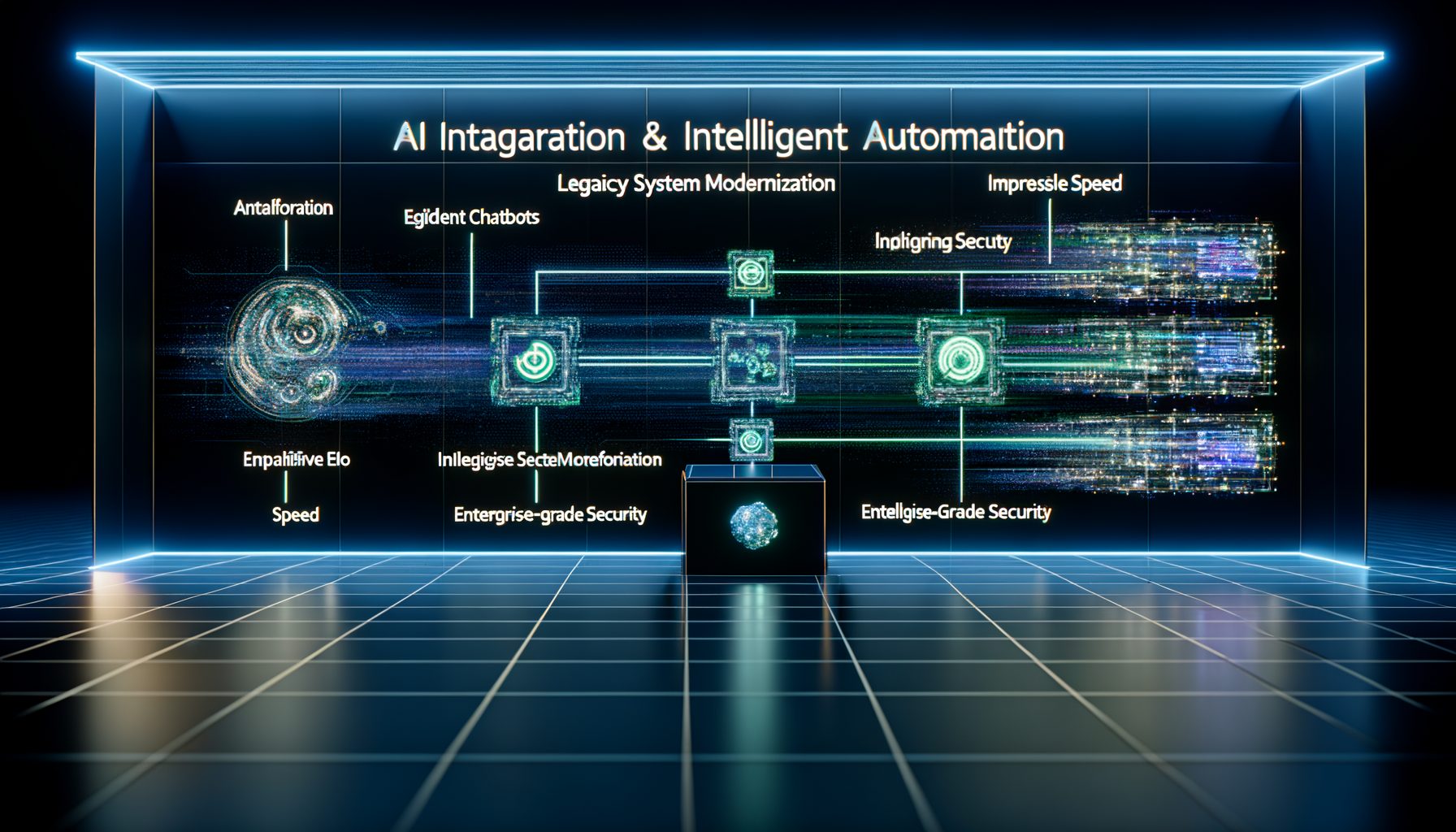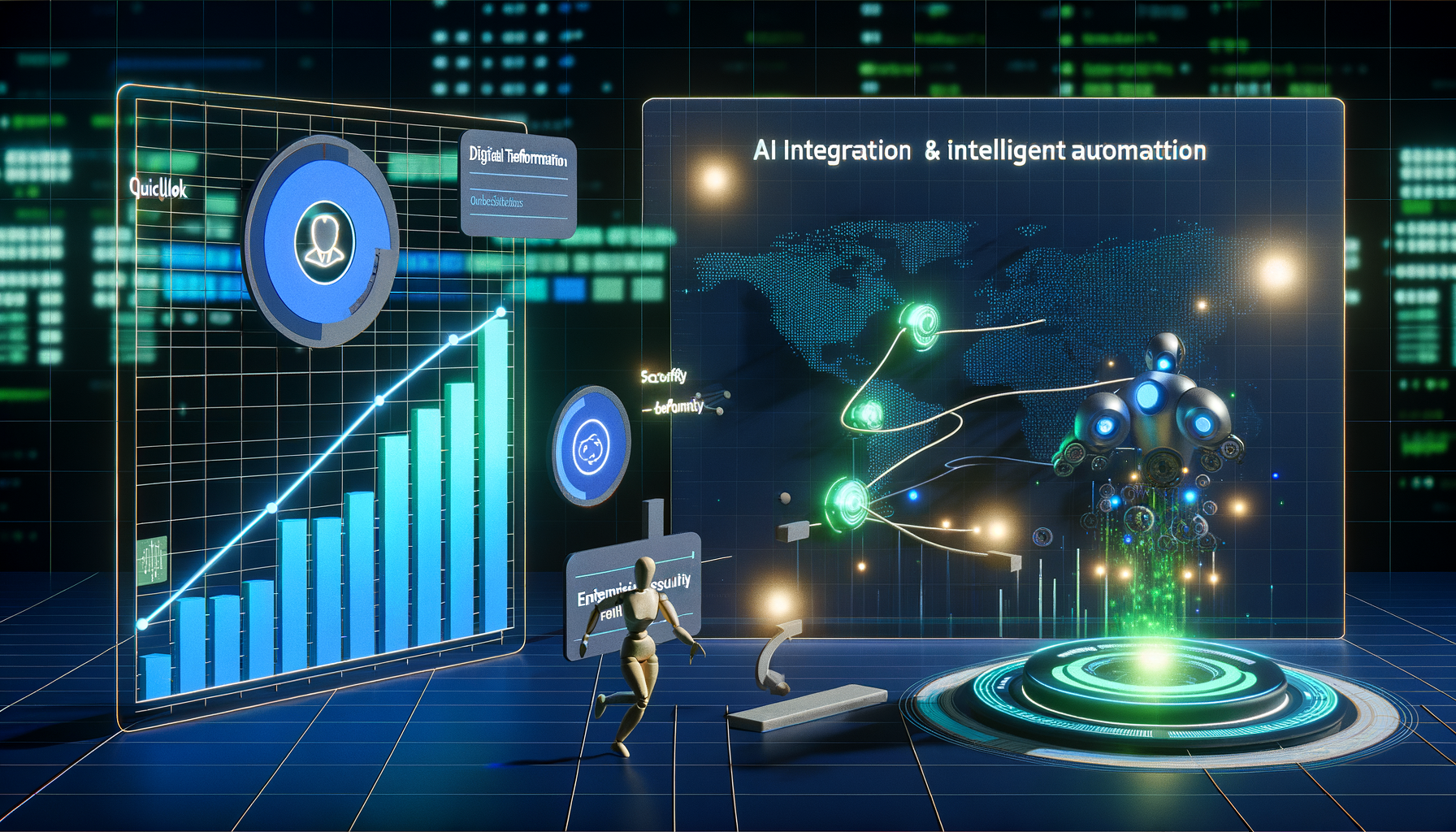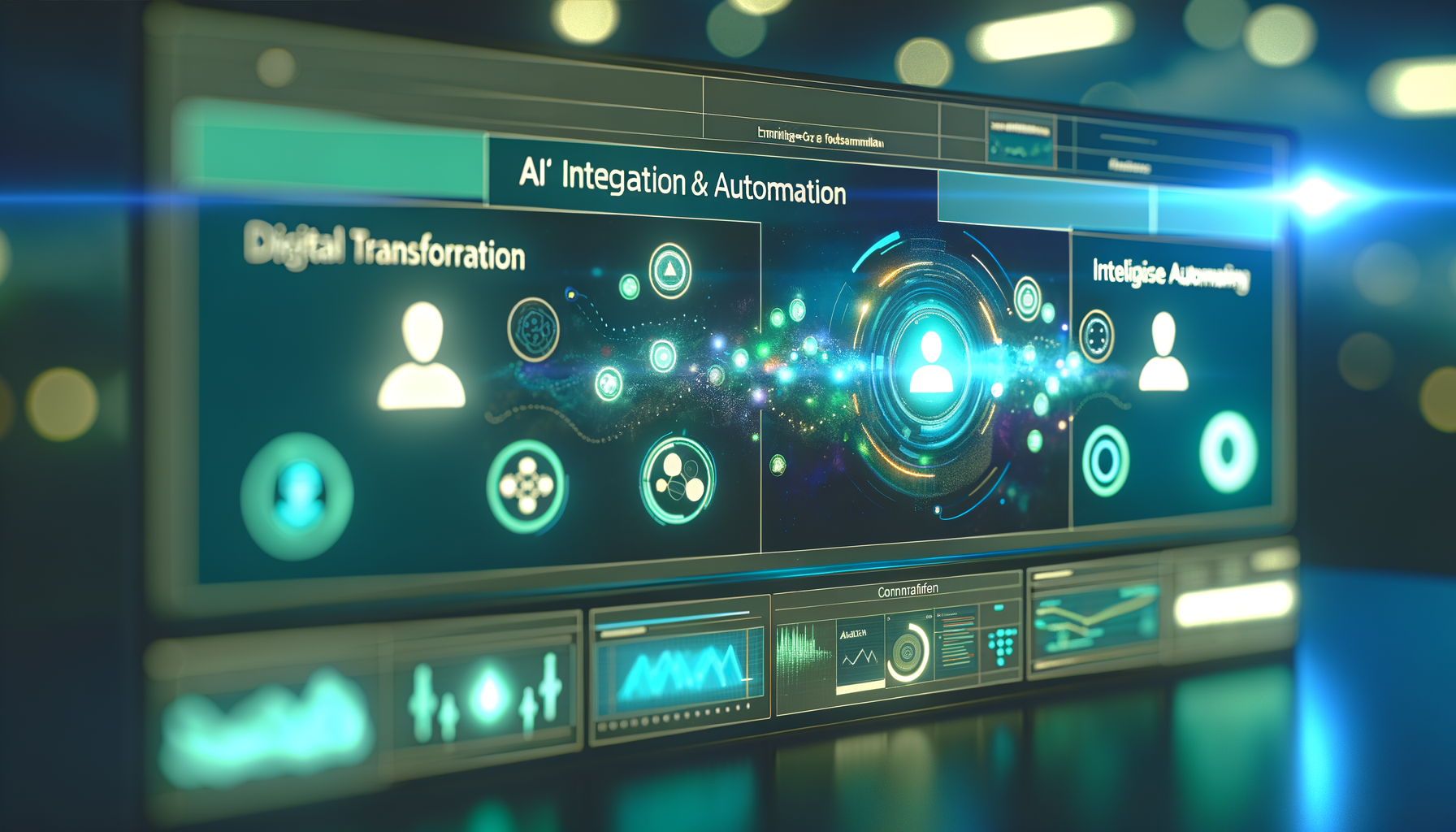In a world where digital transformation is no longer optional, how do you ensure your AI initiatives deliver tangible outcomes? According to a 2023 McKinsey report, 70% of businesses investing in AI see a positive ROI within the first year. However, the path to intelligent automation is fraught with challenges like legacy bottlenecks and scalability concerns. This guide will arm you with actionable insights to navigate these hurdles, ensuring your AI integration efforts are both innovative and results-driven.
Understanding AI Integration Trends

Cloud-migration diagram showing AI integration steps
With AI becoming ubiquitous, understanding key trends for 2025 is crucial. Hyperautomation, the use of advanced technologies including AI and machine learning to automate processes, is at the forefront. This trend not only streamlines operations but also enhances decision-making.
Multi-agent systems are gaining traction. These systems involve multiple AI agents that can work independently or collaboratively to solve complex problems, thereby enhancing operational efficiency.
Another notable trend is the emphasis on ethical AI. Companies are increasingly focusing on responsible AI deployment, ensuring fairness, transparency, and accountability.
LIST
- •Hyperautomation
- •Multi-agent systems
- •Ethical AI
Steps to Implement Intelligent Automation

Code-review collaboration with AI tools
Step 1: Identify Processes for Automation - Begin by auditing your current workflows to pinpoint tasks that are repetitive and data-driven.
Step 2: Choose the Right AI Tools - Depending on your needs, select AI solutions that offer scalability and integration capabilities with your existing systems.
Step 3: Train Your Workforce - Ensure that your team is equipped with the necessary skills to work alongside AI tools. This includes both technical training and change management.
CALLOUT
Quicklook can assist with AI tool selection and workforce training.
Overcoming Legacy Bottlenecks

Diagram of legacy system modernization
Legacy systems often pose significant challenges to AI integration. These outdated platforms can hinder the deployment of new technologies due to their lack of flexibility.
To tackle this, consider modernizing your tech stack. This might involve re-platforming to cloud solutions or integrating middleware that bridges newer AI capabilities with existing systems.
Security is another concern with legacy systems. Ensure robust security protocols are in place to protect sensitive data during the integration process.
QUOTE
Legacy systems don't have to be a roadblock; they can be a launchpad for innovation.
Agentic AI: A Game Changer for Enterprises

Analytics graph showing AI-driven efficiency improvements
Agentic AI, which refers to systems that can act autonomously to achieve goals, is transforming enterprise workflows. These AI agents can manage everything from customer interactions to supply chain logistics.
By deploying agentic AI, companies can achieve higher levels of efficiency and responsiveness. This not only improves customer experience but also positions businesses as leaders in innovation.
Implementing agentic AI requires a robust infrastructure capable of supporting real-time data processing and decision-making.
LIST
- •Customer interactions
- •Supply chain logistics
- •Real-time decision-making
Future-Proofing with AI

Hero banner of multi-agent dashboard glowing on ultra-wide display
Future-proofing your business with AI involves continuous adaptation and innovation. This starts with keeping abreast of emerging technologies and trends in AI.
Invest in scalable AI solutions that can grow with your business needs. This ensures that your investment remains valuable over time.
Finally, fostering a culture of innovation within your organization is key. Encourage experimentation and provide the resources needed to explore new AI opportunities.
CALLOUT
Quicklook offers scalable AI solutions to future-proof your business.
Frequently Asked Questions
QWhat are the key trends in AI integration and intelligent automation for 2025?
QHow can businesses implement hyperautomation to enhance operational efficiency?
QWhat role does agentic AI play in transforming enterprise workflows?
Conclusion
AI integration and intelligent automation are transforming how businesses operate, offering unprecedented opportunities for efficiency and innovation.
Future Vision
As AI technology continues to evolve, so too must our strategies for integrating it into the heart of our operations.
Schedule your AI audit with Quicklook.
